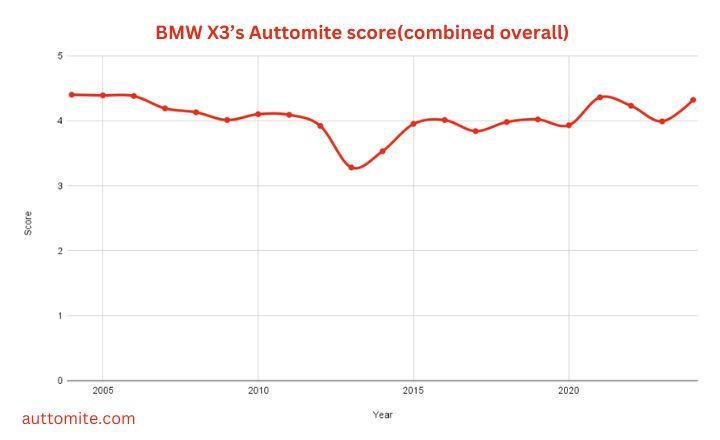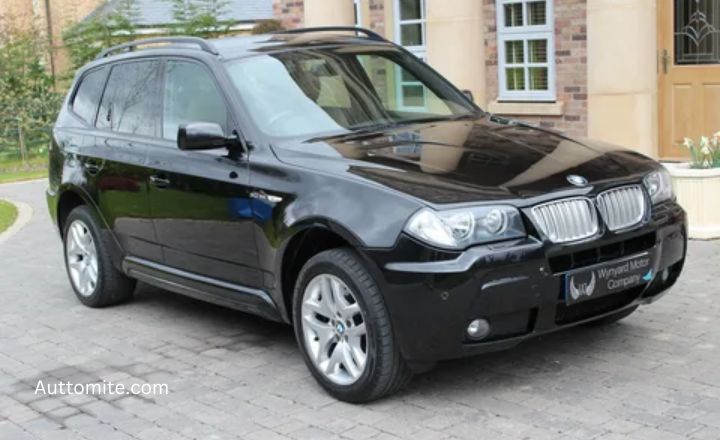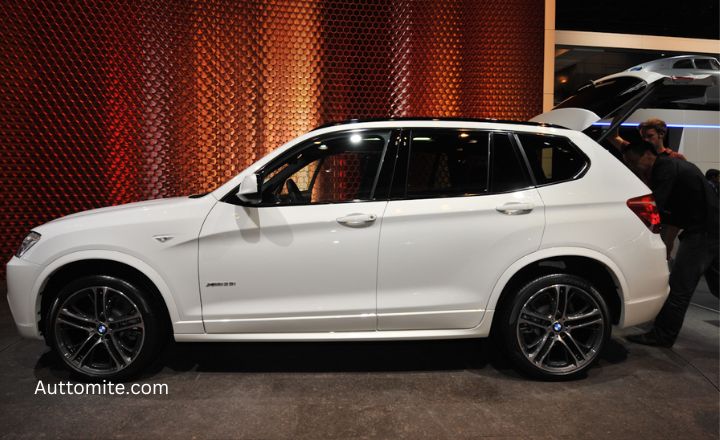The world of BMW’s X3 series is a versatile and luxurious compact SUV that has captured the hearts of many drivers worldwide. From its debut in 2003 to the present day, the best & worst BMW X3 years have undergone several transformations and upgrades, leaving enthusiasts both impressed and disappointed along the way.
With each passing year, BMW has continued to refine and enhance this popular model, introducing new features and technologies to keep it competitive in an ever-evolving automotive landscape.
BMW X3 Generations
The BMW X3 has evolved significantly over its three generations, with each iteration showcasing advancements in design, technology, and performance.
- The first generation, introduced in 2003, set the foundation for the X3’s success with its dynamic driving experience and luxurious interior.
- The second generation, launched in 2010, brought a more refined aesthetic and improved fuel efficiency to the table.
- The current third generation of the BMW X3, which debuted in 2017 with a more athletic stance and cutting-edge features like gesture control technology.
The latest X3 models offer a powerful range of engine options including hybrid variants for environmentally conscious drivers. With each new generation of the BMW X3, we see continuous innovation that elevates this luxury SUV to new heights of style and performance.
| Generation | Years |
| 1st Generation (E83) | 2004-2010 |
| 2nd Generation (F25) | 2011-2017 |
| 3rd Generation (G01) | 2018-Present |
BMW X3 Best, Neutral, and Worst Years
The BMW X3 has seen various highs and lows over the years, with certain models standing out as the best, most neutral, or worst in terms of overall performance and reliability.
The best years for the BMW X3, the 2017 model year is often praised for its refined interior, powerful engine options, and impressive handling. This model year strikes a great balance between luxury and sportiness, making it a popular choice among SUV enthusiasts.
The most neutral year for the BMW X3 could be argued to be 2014. While this model year doesn’t have any major standout features that make it exceptional or subpar compared to others, it still offers a solid driving experience and decent reliability.
The worst years for the BMW X3 could be considered to be 2007 due to reported issues with reliability and durability. This particular model year has been associated with problems such as engine failures and electrical issues that have caused headaches for owners.
This graph compiles the collective ratings from various sources to provide a comprehensive overview of the BMW X3’s performance over time.

We have classified all BMW X3 model years as either top-rated, average, or subpar to offer a straightforward summary.
| Generation | Best Years | Neutral Years | Worst Years |
| 1st Generation (E83) | 2004 2005 2009 2010 | N/A | 2006 2007 2008 |
| 2nd Generation (F25) | 2015 2016 2017 | 2011 2012 | 2013 2014 |
| 3rd Generation (G01) | 2021 2022 2023 2024 | N/A | 2018 2019 2020 |
Best & Worst BMW X3 Years For 1st Generation (2004-2010)
The first-generation BMW X3, produced from 2004 to 2010, has had its share of standout years and disappointments. BMW managed to address many of these issues in later model years through updates and revisions based on customer feedback.

BMW X3 Best Years: 2004, 2005, 2009, 2010
The engines powering the BMW X3 1st Generation (2004–2010) are a standout feature, particularly in the 2009 and 2010 models.
These years saw improvements in performance and fuel efficiency, with options including the potent inline-6 and V8 engines that deliver a thrilling driving experience.
Safety features also received upgrades during this time, such as improved airbag systems and stability control technology, further enhancing the overall security of the vehicle.
With these impressive advancements, minor complaints were reported by some drivers regarding certain aspects of the BMW X3 from this era. Issues with the quality and reliability of interior materials and electronic components were cited as areas for improvement.
These vehicles remained high due to their powerful engines, enhanced safety features, and dynamic driving capabilities that set them apart in their class.
The Worst Years: 2006, 2007, 2008
In the worst years of 2006, 2007, and 2008, many BMW X3 owners faced a common problem with their Positive Crankcase Ventilation (PCV) valve heaters.
These components were prone to failure, causing issues such as rough idling, decreased engine performance, and even stalling. The malfunctioning PCV valve heaters not only disrupted the driving experience but also led to potential safety concerns on the road.
The first-generation BMW X3 models from 2004–2010 suffered from these recurring PCV valve heater problems due to manufacturing defects and subpar quality control measures.
Owners faced frustration with the frequent need for repairs and replacements, impacting both their wallet and their trust in the vehicle’s reliability.
Efforts by BMW to address these issues through recalls and service bulletins, many drivers still experienced ongoing troubles related to this specific component throughout those challenging years.
Best & Worst Years for BMW X3 2nd Generation (2011-2017)
For the BMW X3 2nd generation (2011–2017), enthusiasts often tout 2015 as one of its best years. This model year saw significant updates, including improved fuel efficiency, enhanced interior features, and upgraded technology options.

Best Years For BMW X3: 2015, 2016, 2017
The BMW X3’s advanced powertrain options truly set it apart in the luxury SUV market. The inclusion of diesel and hybrid drivetrains offered customers not just enhanced fuel efficiency but also a greener choice in terms of emissions.
This forward-thinking approach to powertrains reflected a growing demand for more sustainable transportation solutions. Safety features in these model years were cutting-edge, with advancements like automatic emergency braking systems and adaptive cruise control becoming more prevalent.
These technologies significantly improve driver safety and peace of mind on the road. The integration of these safety features showcased BMW’s commitment to innovation and ensuring their vehicles were equipped with the latest in protective technology.
The combination of advanced powertrains and state-of-the-art safety features in the BMW X3 from 2015 to 2017 represented a significant leap forward for the brand.
As consumer preferences shifted towards eco-friendliness and enhanced protection, BMW was quick to adapt by offering models that not only excelled in performance but also prioritized sustainability and driver well-being.
This period marked a pivotal moment for the automotive industry as automakers began envisioning a future where high-performance vehicles also placed emphasis on environmental consciousness and safety innovations.
The Neutral Years: 2011, 2012
In the Neutral Years of 2011 and 2012, the automotive world witnessed a significant shift with the introduction of the second generation BMW X3 (2011–2017).
The German automaker revamped its popular luxury compact SUV, infusing it with sleek design elements and enhanced performance capabilities. BMW integrated innovative features like iDrive and advanced safety systems into the X3, setting a new standard for premium SUVs in this era.
The BMW X3’s refined interior boasted luxurious finishes and spaciousness, appealing to drivers seeking both comfort and style. With improved fuel efficiency and dynamic driving dynamics, the second-generation X3 stood out as a versatile option for urban adventurers and outdoor enthusiasts alike.
As consumer preferences shifted towards more eco-friendly options during these years, BMW also introduced hybrid variants of the X3, aligning with the growing demand for sustainable mobility solutions.
The Worst Years: 2013, 2014
The years 2013 and 2014 were particularly challenging for BMW enthusiasts, as the second-generation X3 faced several setbacks. These years saw a decline in the model’s reputation due to quality control issues and customer complaints.
Many owners reported problems with the engine, electronic systems, and overall reliability of the vehicle. BMW struggled to address these issues effectively, leading to a drop in consumer confidence and sales figures during this period.
The once-popular X3 faced criticism for failing to live up to its promised performance and luxury standards. Many potential buyers turned to competitors offering more reliable options in the premium compact SUV market.
These troubled years served as a wake-up call for BMW, pushing them towards improving their quality control processes and ensuring better customer satisfaction in subsequent models.
Best & Worst Years for BMW X3 3rd Generation (2018-Present)
The BMW X3 3rd Generation, spanning from 2018 to the present, has seen a blend of highs and lows in its performance and reliability.

Best BMW X3 Years: 2021, 2022, 2023, and 2024
The BMW X3, a stalwart in the luxury SUV segment, underwent significant upgrades with the introduction of the 3rd generation in 2018. The standout feature is the iDrive infotainment system, which has evolved to become more intuitive and user-friendly over the years.
With each passing model year from 2021 to 2024, BMW has continued to enhance this system with advanced technology and seamless integration.
These years brought further refinements, such as enhanced voice recognition capabilities and expanded connectivity options.
Looking ahead to the 2023 and 2024 model years, we can expect even more sophisticated features:
- Augmented reality navigation
- Personalized settings
As BMW continues to push boundaries in automotive innovation, the future looks promising for those who appreciate cutting-edge technology seamlessly integrated into their driving experience with the X3.
The Worst Years: 2018, 2019, 2020
2018, 2019, and 2020 have been tumultuous years for the automotive industry, marked by numerous recalls that have left consumers concerned about the safety and reliability of their vehicles.
The most notable recalls during this period involved hybrid battery issues in various models, including the popular BMW X3 3rd Generation.
This recall highlighted a growing:
- Concern over the Complexity
- susceptibility of hybrid technology to malfunctions
- Prioritize transparency
- Accountability
- Raising questions about the long-term viability of these eco-friendly vehicles.
As drivers grappled with uncertainty surrounding their hybrid vehicles’ performance and safety, manufacturers scrambled to address these issues promptly and effectively.
These challenges that come with advancing technology in automobiles and underscore the importance of rigorous testing and quality control measures in ensuring consumer trust.
BMW X3 Resale Values
The BMW X3 holds its value remarkably well in the resale market, making it a desirable choice for buyers seeking a long-term investment.

The wide range of customization options available allows buyers to personalize their vehicles to suit their preferences. This customization potential contributes to maintaining higher resale values as owners are willing to pay a premium for unique configurations.
Conclusion
When considering the best & worst BMW X3 years, it is evident that each model year comes with its own set of strengths and weaknesses. From the highly-praised performance and reliability of the 2015 model to the numerous issues reported with the 2012 version, each year brings its own set of pros and cons for potential buyers to consider
Conducting thorough research and test-driving different years can help in finding the best fit for individual preferences and needs. Make sure to prioritize factors such as maintenance history, mileage, and overall condition when selecting a BMW X3 model year.
FAQ’s
Which model bmw x3 years to avoid for purchasing?
The 2007 and 2013 model years are often cited as ones to avoid due to various reported issues.

